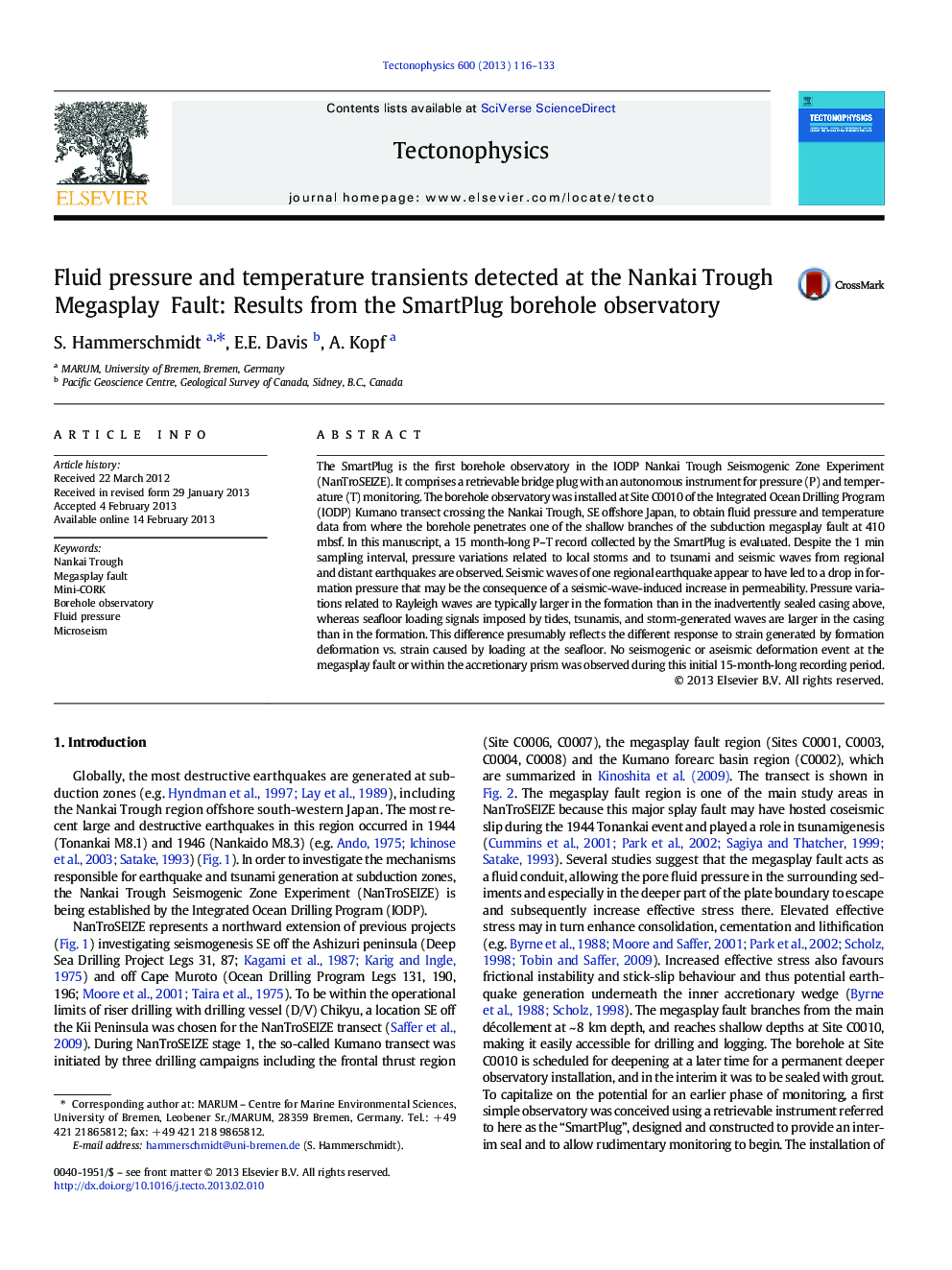| کد مقاله | کد نشریه | سال انتشار | مقاله انگلیسی | نسخه تمام متن |
|---|---|---|---|---|
| 4692223 | 1636787 | 2013 | 18 صفحه PDF | دانلود رایگان |

• A SmartPlug observatory monitored the Nankai Trough Megasplay Fault for 15 months.
• In situ borehole pressure (P) and temperature (T) data were collected and evaluated.
• After the data were de-tided and filtered, several P transients were detected.
• P transients were caused by storm-induced microseism, seismic and tsunami waves.
• No indications for recent activity of the Megasplay Fault were found.
The SmartPlug is the first borehole observatory in the IODP Nankai Trough Seismogenic Zone Experiment (NanTroSEIZE). It comprises a retrievable bridge plug with an autonomous instrument for pressure (P) and temperature (T) monitoring. The borehole observatory was installed at Site C0010 of the Integrated Ocean Drilling Program (IODP) Kumano transect crossing the Nankai Trough, SE offshore Japan, to obtain fluid pressure and temperature data from where the borehole penetrates one of the shallow branches of the subduction megasplay fault at 410 mbsf. In this manuscript, a 15 month-long P–T record collected by the SmartPlug is evaluated. Despite the 1 min sampling interval, pressure variations related to local storms and to tsunami and seismic waves from regional and distant earthquakes are observed. Seismic waves of one regional earthquake appear to have led to a drop in formation pressure that may be the consequence of a seismic-wave-induced increase in permeability. Pressure variations related to Rayleigh waves are typically larger in the formation than in the inadvertently sealed casing above, whereas seafloor loading signals imposed by tides, tsunamis, and storm-generated waves are larger in the casing than in the formation. This difference presumably reflects the different response to strain generated by formation deformation vs. strain caused by loading at the seafloor. No seismogenic or aseismic deformation event at the megasplay fault or within the accretionary prism was observed during this initial 15-month-long recording period.
Journal: Tectonophysics - Volume 600, 17 July 2013, Pages 116–133